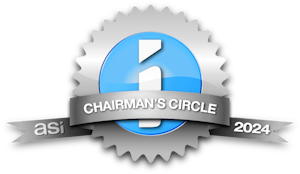
In the dynamic, relevancy-driven world of associations and nonprofits, rebranding occurs frequently, but rebranding well requires planning and forethought. Here are three aspects that smart associations and institutions must consider before they rebrand:
1. Names are important for more than you think.
Beyond its narrative and emotional appeal, your name matters because it’s what people are going to find via Google. Accept the inevitable: changing an association or institution name may negatively impact SEO – visibility in searches – in the short term, especially if the website URL also changes.
Which means, for a while, it may be harder for potential members to find you. Take comfort in knowing this gap is a short-term issue. Google has incentives to keep track of companies through rebranding (they want people to have successful searches and keep using Google), and you can take steps to smooth the transition.
For instance, if you also happen to be in the middle of redesigning your website – which is a strong possibility – you can set up redirects for links using your old URL. With redirects, people who find your previous name and site will be automatically forwarded to the new site.
You should also use this opportunity to pick a name that will work out better in the long run. Many associations and nonprofits use common names, or even worse, common acronyms. A good name will not only conjure up a strong image of what you do; it will also make you easier to find online.
In 2015, for example, the Consumer Electronics Association changed its name to the Consumer Technology Association. They feel that the new name keeps them “focused on consumers but also expands our mandate to the services, products, software, apps and developments yet to come.”
As a second step, you can also include your former name in print materials and online for a few months into the rebranding work. Keep it subtle—you want people to focus on the new brand. A simple, “formerly XYZ” in text or small type, will help members and consumers know they have found the right place. Set a time period for the transition, maybe six months, and then remove the old name from all new materials and the website.
2. Good timing makes it easier on everyone.
Associations often roll out rebranding programs during milestones, like anniversaries, to help make sure everyone pays attention when it happens and to reduce confusion. Another good time you should consider is during a site redesign. If the redesign includes making your site responsive to smaller screens – which it should – there’s a pretty good chance you’ll need new images for the logos anyway.
A site redesign is also a good way to frame changes to how your association outwardly presents itself. As part of the redesign, you will make decisions about elements on your front page, so you’ll already be focused on new images and the overall presentation. Taking a holistic approach—consider online and print materials—can save you time and money.
3. Rebranding should benefit your members, so don’t forget to consider their perspective.
Rebranding can sometimes alienate existing members if you don’t properly comprehend what they expect from the association. There may come a time when they wonder whether this new entity you’ve become still represents their interests. Good communication can greatly reduce the chance of a misfire.
For example, a few years ago, the University of California decided their century-old logo using a seal and the motto, “Let there be light” didn’t paint the image of a school dedicated to high-tech research. Though they quietly introduced a new design, it seemed to reflect modern technology too well. Students, faculty, alumni, and other designers were quick to point out that the color gradient on the “C” made the new logo look like it was eternally “loading.” Others criticized the image and said it resembled a logo for a washing machine. Not very academic at all.
School officials quickly announced suspension of the logo, but the time and money spent on the new design were still spent. And, the 20/20 of hindsight asks if it might have ended so much better if someone took the time for a focus group or even a survey of what the invested members of the UC community thought or felt about the school’s logo and image — before the rollout. It might have saved a lot of time, money, and memes.
 Strategic, well-planned rebranding can breathe new life and focus into an association and pay off for years to come.
Strategic, well-planned rebranding can breathe new life and focus into an association and pay off for years to come.


